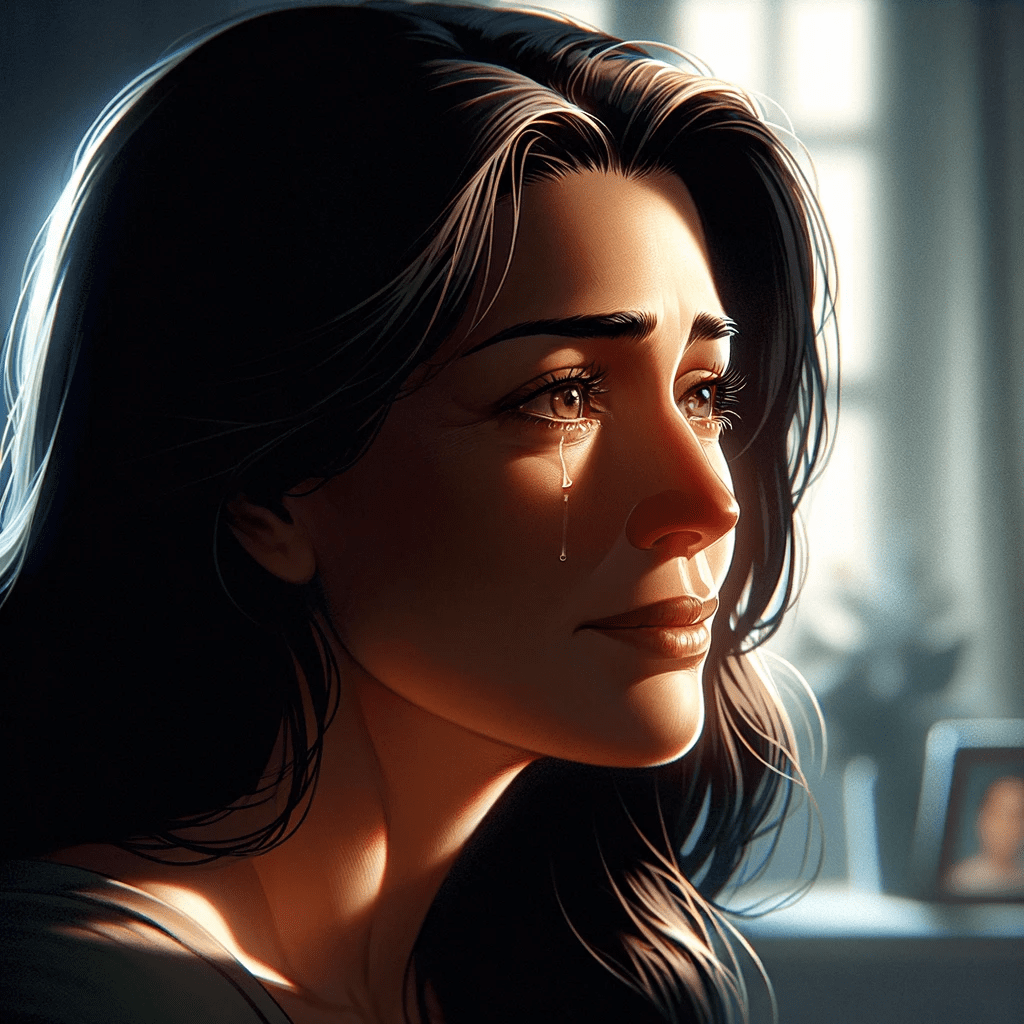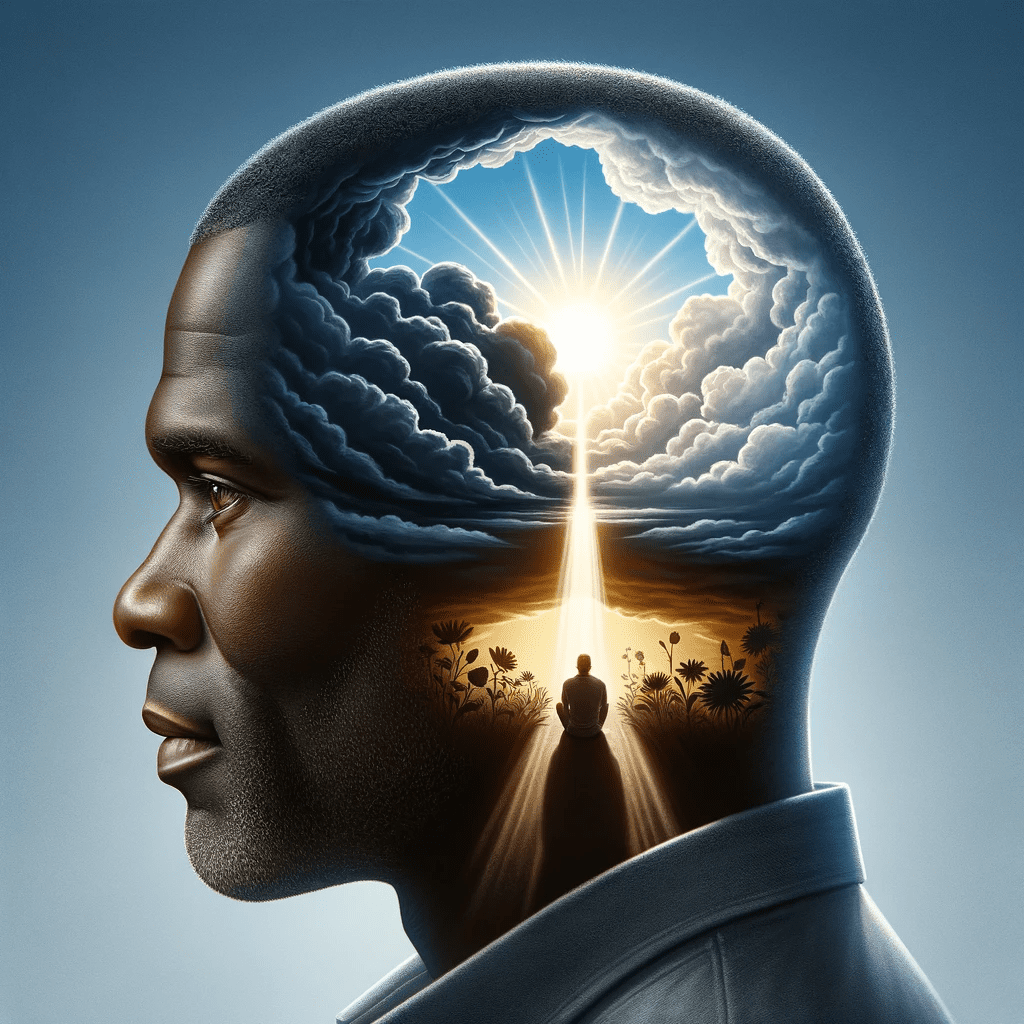Experiencing grief is a normal reaction following the passing of someone close. Typically, the intensity of grief lessens as time passes for most individuals. Yet, there is a minority for whom the profound sense of loss endures, with symptoms so intense that they disrupt normal functioning and hinder the ability to move forward in life. Prolonged Grief Disorder is defined by such enduring and severe grief, which significantly disrupts daily activities and wellbeing. Prolonged Grief Disorder Treatment using the Split-Second Unlearning theory can be highly effective. Split Second Unlearning as we shall discover is a psychotherapeutic intervention that delivers results within a matter of days, not weeks or months.
Symptoms and Diagnosis
Prolonged Grief Disorder is a condition marked by intense and persistent grief that disrupts daily life. Adults with Prolonged Grief Disorder often feel a deep yearning for the deceased or are preoccupied with thoughts of them, a symptom also observed in children and adolescents, though they may focus more on the death’s circumstances. This profound grief impairs one’s ability to function normally in everyday activities, such as at home or work, unlike typical bereavement.
For a Prolonged Grief Disorder diagnosis, the bereavement period must exceed one year for adults and six months for children and adolescents. Additionally, the grieving person should have experienced at least three of the following symptoms nearly daily for at least a month before diagnosis, as outlined by the American Psychiatric Association (APA) in 2022:
- Identity disruption, feeling like a part of oneself has died.
- Strong disbelief regarding the death.
- Avoiding reminders of the deceased.
- Intense emotional pain, like anger, bitterness, or sorrow.
- Challenges in reintegration, such as difficulties in engaging with friends, pursuing interests, or planning for the future.
- Emotional numbness.
- A sense of life’s meaninglessness.
- Profound loneliness.

When is it time to let go?
Moreover, the grieving process in PGD usually extends beyond typical societal, cultural, or religious expectations of mourning duration. Research indicates that 7%-10% of bereaved adults experience PGD (Szuhany et al., 2021). Among children and adolescents who have lost a loved one, 5%-10% may develop depression, post-traumatic stress disorder (PTSD), or PGD following their loss (Melhem et al., 2013).
More Vulnerable to Loss
Certain groups may have a heightened susceptibility to enduring grief disorder, including elderly individuals and those with a history of depression or bipolar disorder. Caregivers, particularly those who tended to a partner or had prior episodes of depression, are also more vulnerable. The likelihood of experiencing prolonged grief intensifies when the death is abrupt or occurs under distressing conditions (Szuhany et al., 2021).
Prolonged grief disorder frequently coexists with other mental health issues, such as PTSD, anxiety, or depression. A significant symptom associated with this disorder is sleep disturbance, with about 80% of affected individuals suffering from persistent sleep difficulties (Szuhany et al., 2021). The inclusion of the criteria for prolonged grief disorder in the DSM-5-TR provides healthcare professionals with a unified framework to distinguish between typical grief and this persistent, severe, and incapacitating form of grief.
Treatment.
For most people, grief-related symptoms following the death of a loved one decrease over time and do not impact their everyday functioning. Although feelings and symptoms of grief may sometimes increase at different points in time, they do not usually require mental health treatment. However, for people who develop the more intense, ongoing symptoms of prolonged grief disorder, evidence-based treatments are available. Treatments using elements of cognitive-behavioural therapy (CBT) have been found to be effective in reducing symptoms.
Cognitive-behavioural therapy (CBT)
One type of treatment, complicated grief treatment, incorporates components of CBT and other approaches to help adapt to the loss. It focuses on both accepting the reality of the loss and restoration—working toward goals and a sense of satisfaction in a world without the loved one (Szuhany et al., 2021). (More information at the Columbia University Center for Prolonged Grief.)
CBT can also be helpful in addressing symptoms that occur along with prolonged grief disorder, such as sleep problems. Research has shown that CBT for insomnia is effective in improving sleep. Research also suggests that CBT can be effective with children and adolescents experiencing symptoms of prolonged grief (Melham, et al., 2013; Boelen et al., 2021).
Bereavement support groups
Bereavement support groups can also provide a useful source of social connection and support. They can help people feel less alone; thus helping avoid the isolation that could increase the risk for prolonged grief disorder. There are currently no medications to treat specific symptoms of grief. Despite the existence of effective treatments, people experiencing ongoing intense grief may not seek help. One study found that among caregivers with prolonged grief disorder, the majority did not access mental health services (Lichtenthal et al., 2011).
Split-Second Unlearning
The Split-Second Unlearning Theory by Hudson and Johnson (Hudson and Johnson, 2021) offers a novel approach to addressing psychophysiological stress by targeting Emotional Memory Images (EMIs). Through client-centred interventions, individuals are helped to dissociate from these EMIs, fostering improved mental and physical health. While specific examples showcase the theory’s potential, further research and discussions within the therapeutic community are encouraged to validate and expand upon this innovative approach. Engaging with the Split-Second Unlearning Theory could open new horizons in therapy and mental health, and readers are urged to explore this theory further and partake in dialogues regarding its potential impact.
Split-Second Unlearning for Treating Prolonged Grief
The Split-Second Unlearning Theory could offer a new perspective for treating Prolonged Grief Disorder (PGD). By identifying and addressing Emotional Memory Images (EMIs) related to the loss, individuals suffering from PGD may find relief from persistent, intense grief. The theory’s focus on ‘unlearning’ the stress responses linked to these emotional memories could facilitate the processing of grief and aid in accelerating the emotional healing process.
The bereaved is held in a perpetual freeze response by the EMI, where they are consciously unable to move forward with their life. The EMIs of the actual ending are stored subconsciously within the mind’s eye, therefore the bereaved are incapable of letting go until the EMI is cleared. This approach might offer a more targeted intervention for those struggling with the complexities of prolonged grief, focusing on the root emotional triggers of their distress.
Emotional Memory Images Perpetuate The Grief Process.
Emotional Memory Images (EMIs) play a profound role in the human experience of emotions, memory, and behaviour (Hudson and Johnson, 2022). When it comes to the grief process, EMIs can serve as powerful anchors, either facilitating healing or perpetuating the state of grief. Here’s how:
Vivid Recollections:
Emotional memories often come with vivid imagery. These images, associated with a loved one who has passed away, can trigger strong emotional reactions each time they come to mind. A favourite spot, a shared experience, or even everyday objects can evoke these memories.
Intensified Feelings:
The more vivid and detailed the image, the stronger the emotional response. This can lead to a continuous cycle where the memory image evokes grief, which in turn reinforces the potency of the image.
Avoidance Behaviour:
Due to the pain these memories can bring, individuals might start avoiding situations, places, or activities that remind them of the deceased. This avoidance can prevent them from processing their grief fully.
Recurrent Flashbacks:
EMIs can lead to spontaneous and recurrent flashbacks, especially if the death was traumatic. These involuntary recollections can make it challenging for the grieving individual to move forward.
Stagnation in Grief:
As these images remain fresh and potent in one’s mind, they can make the loss feel recent, even if significant time has passed. This stagnation can hinder the natural progression of grief.
Alteration in Perception:
EMIs can change one’s perception of the world. For instance, places or events once seen as joyful might now be perceived through the lens of loss and sorrow.
Physical Reactions:
Emotional memory images can also produce physical responses like a racing heart, sweating, or feeling faint. These physiological reactions further anchor the grief experience.
Resistance to New Experiences:
Due to the pain associated with these memory images, an individual might resist forming new memories or experiences to avoid potential pain in the future.
Understanding the role of EMIs in the grief process can be beneficial for therapists and counsellors, helping them guide individuals toward healing. By acknowledging and processing these images, rather than avoiding or suppressing them, one can integrate the memories in a way that allows for healthy grieving and eventual acceptance.
Colin’s Journey from Loss to Reconnection through the “Brief Grief” Process
Colin, a dedicated regional manager for a leading organisation, faced an immense personal loss when his father passed away three years ago. With the weight of his professional responsibilities bearing down on him, he found himself consumed by work, leaving him no room to process his grief. The unaddressed emotions and memories associated with his father’s passing became an underlying stressor. This unresolved grief, compounded by his demanding role, manifested in escalating work-related stress.

Time to Grieve No More
Things came to a head when the combined pressures culminated in Colin experiencing burnout—a state of emotional, mental, and often physical exhaustion brought on by prolonged or repeated stress. Recognising the need for change, Colin stumbled upon the work of Matt Hudson and his transformative “Brief Grief” process.
Choosing to embark on this healing journey, Colin underwent the “Brief Grief” process. Remarkably, after just one restful night’s sleep post the session, a profound shift occurred. Colin felt a renewed connection not only to the cherished memories and love for his father but also to various facets of his life. This newfound clarity allowed him to re-engage with his job with passion and purpose. Additionally, he began rebuilding and strengthening bonds with his colleagues, friends, and family. The transformation was not just about moving past grief but about rediscovering the essence of his life and relationships, all thanks to Matt Hudson’s effective approach.
Matt Hudson’s Brief Grief Treatment
Matt Hudson’s “Brief Grief Treatment” is a digital download where Matt Hudson takes you through the Split-Second Unlearning process. During this video, Matt guides you step by step, allowing your mind to clear and for the pain of your loss to come to a natural end. When the EMI of your loved one is cleared you will be able to think about them with pride, love and happiness. Instead of being held in their final moments, you will be free to move on and celebrate their life. The digital download is fast, effective and affordable, when compared to traditional therapeutic interventions.
Download your copy now.
References.
- American Psychiatric Association. (2022). Diagnostic and Statistical Manual of Mental Disorders, Fifth Edition, Text Revision (DSM-5-TR). American Psychiatric Association Publishing. https://www.psychiatry.org/psychiatrists/practice/dsm
- Boelen, P. A., Lenferink, L., & Spuij, M. (2021). CBT for Prolonged Grief in Children and Adolescents: A Randomized Clinical Trial. The American journal of psychiatry, 178(4), 294–304. https://doi.org/10.1176/appi.ajp.2020.20050548
- Hudson, M., & Johnson, M. I. (2021). Split-Second Unlearning: Developing a Theory of Psychophysiological Dis-ease. Frontiers in Psychology, 12, 716535. https://doi.org/10.3389/fpsyg.2021.716535
- Hudson, M., & Johnson, M. I. (2022). Definition and attributes of the emotional memory images underlying psychophysiological dis-ease. Frontiers in Psychology, 13, 947952. https://doi.org/10.3389/fpsyg.2022.947952
- Lichtenthal, W. G., Nilsson, M., Kissane, D. W., Breitbart, W., Kacel, E., Jones, E. C., & Prigerson, H. G. (2011). Underutilization of mental health services among bereaved caregivers with prolonged grief disorder. Psychiatric services (Washington, D.C.), 62(10), 1225–1229. https://doi.org/10.1176/ps.62.10.pss6210_1225
- Melhem, N. M., Porta, G., Walker Payne, M., & Brent, D. A. (2013). Identifying prolonged grief reactions in children: dimensional and diagnostic approaches. Journal of the American Academy of Child and Adolescent Psychiatry, 52(6), 599–607.e7. https://doi.org/10.1016/j.jaac.2013.02.015
- Szuhany, K. L., Malgaroli, M., Miron, C. D., & Simon, N. M. (2021). Prolonged Grief Disorder: Course, Diagnosis, Assessment, and Treatment. Focus (American Psychiatric Publishing), 19(2), 161–172. https://doi.org/10.1176/appi.focus.20200052